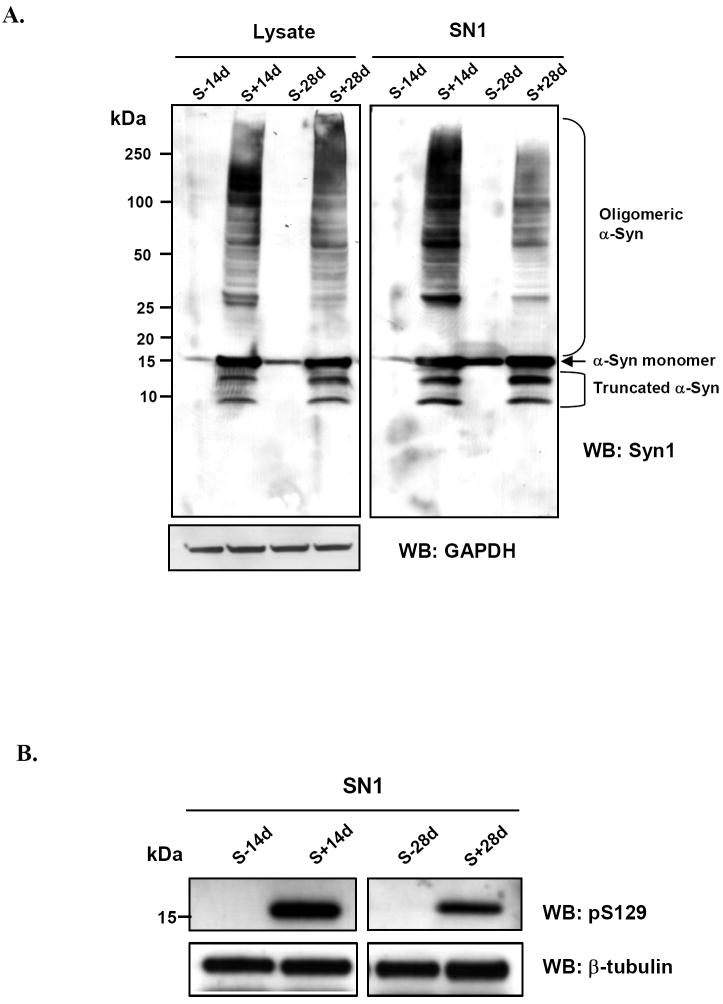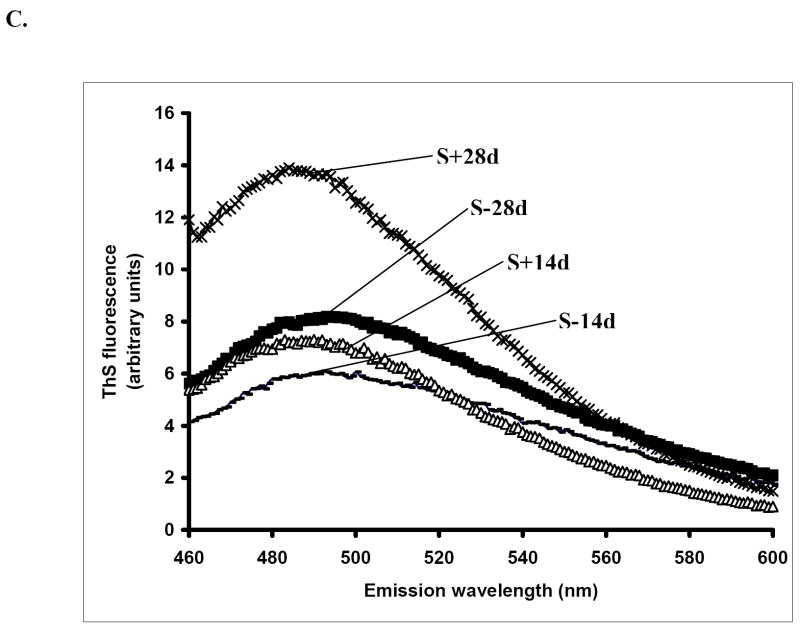Figure 1. TetOff induced expression of wild-type human α-Syn in 3D5 cells leads to A) α-Syn accumulation and oligomerization B) increased α-Syn phosphorylation.
Lysate and SN1 fraction (buffer soluble) derived from cells induced for α-Syn expression for 14 days (S+14d) or 28 days (S+28d), or from those without induction for the same duration (S-14d, S-28d), were probed with a phosphorylation independent antibody to α-Syn, Syn1, and an antibody to α-Syn phosphorylated at S129, pS129. GAPDH and β-tubulin immunoblots served as loading controls. C) increased Thioflavin S binding is observed in sarkosyl-insoluble samples with longer duration of induction. The fluorescence signals integrated from the peak areas [arbitrary units (au)] were 599.91±71.82, 782.43±62.9, 611.24±96.29, 1127.60±141.40 for S-14d, S+14d, S-28d, S+28d respectively. The difference between the S+28d and S+14d is statistically significant (P < 0.02, n=3, Student’s t-test).


